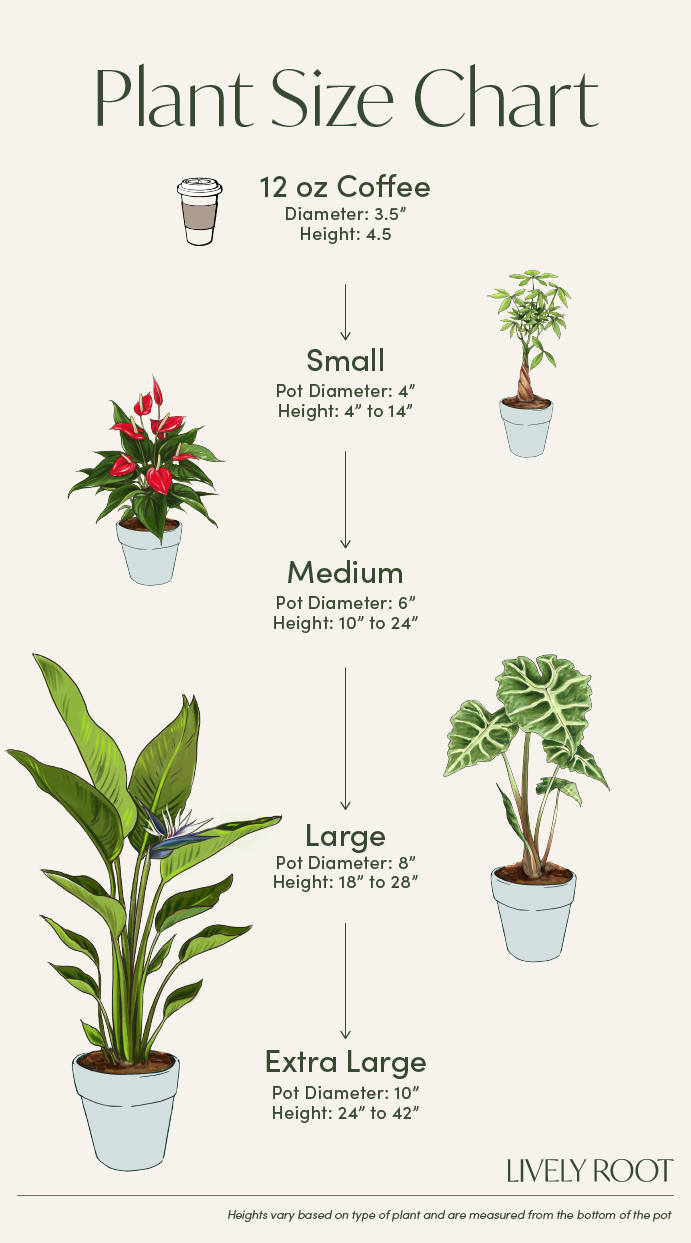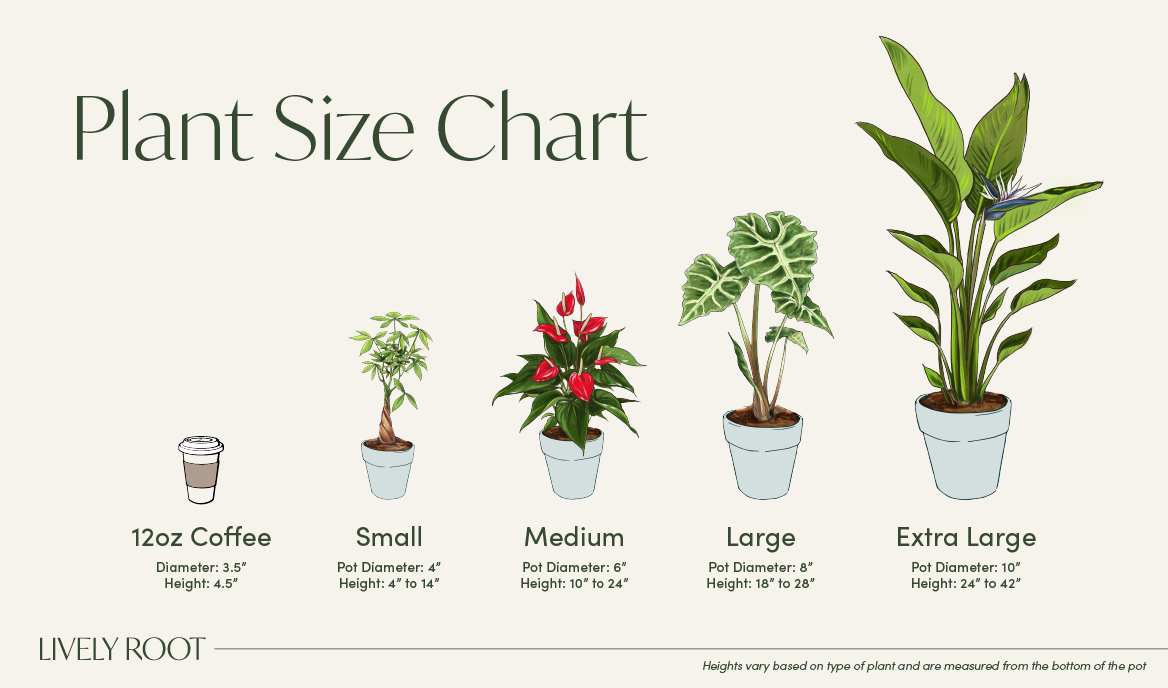

Plumeria Tree Care Guide & Presentation

This plant will do well outside on the southeast side of the home to avoid afternoon heat. Give at least 6 hours of morning sun per day to promote plenty of flowers.
Let the outdoor soil dry between waterings through the growing season between March and September. Water sparingly in the winter during dormancy as they don't like wet feet. When watering in a container planting, ensure the pot has good drainage.
Thrives well in moderate humidity levels. If this plant is planted in a dry climate, provide misting to the foliage but not to the flowers. Add a water source nearby or a tray of wet pebbles to create humidity.
Keep this plant in rooms where the temperature is a comfortable 65°F-85°F and avoid cold drafts or air vents below 55°F. They thrive in warmer and humid temperatures.
Outdoors in bright shade, where nights are above 55°F. If using in a container, they can only be used as an annual up to Zone 9-11. This plant doesn't tolerate cold temperatures. To winterize during dormancy, place in a container and bring inside during the winter while they are small.
Apply a 10-30-10 fertilizer once each month to encourage flowering.
Spray down the leaves if rain hasn't already done so to clean the leaves. Avoid hitting the flowers with water. Use a shower spray at a low level to avoid harming the flowers and leaves.
Prune off a 4-6 inch cutting. Allow the tips to heal and dry for a couple of days before placing them in the cactus and succulent potting mix like you would a succulent. Prepare the planting tray with damp potting mix in each pot. Then, place the cuttings in bright, indirect sunlight. Cover the planting with a clear plastic bag loosely to create humidity and mist with water as the soil dries. Continue to nurture with moisture and bright indirect light. Turn the pot each time you water if the light is coming from one direction.
Plumeria Tree: Overview
Plumeria, also known as Frangipani, is a tropical tree famous for its fragrant, vibrant flowers that you may recognize from Hawaiian leis. Its Latin name is Plumeria spp., and it belongs to the Apocynaceae family. Native to tropical regions like Central America and the Caribbean, the Plumeria thrives in hardy zones 10-12. These trees are sun-loving and are relatively easy to care for, making them popular choices for tropical gardens. Unfortunately, they are poisonous for pets because of the toxic sap they contain.
Plumerias are large plants that can easily reach 6ft. Their divine-smelling blooms come in a variety of colors, including white, cream, yellow, pink, and lilac. Even as a potted houseplant, Frangipani can live for several decades.
Plumeria: Alternative Names
- Frangipani
- Hawaiian Lei Flower
- Temple Tree
- Graveyard Tree
Frangipani Plumeria: Benefits
- Frangipani Plumeria is an aromatic flowering plant that adds a delightful fragrance to any space.
- Its vibrant and exotic blooms contribute to its aesthetic appeal, enhancing the beauty of gardens and landscapes.
- With medicinal properties attributed to its extracts, it holds potential health benefits.
- Planted outdoors, it can boost a property's curb appeal, making it an ideal choice for landscaping.
- Its dense foliage makes it an excellent privacy plant, creating natural barriers and adding tranquility to outdoor spaces.
Plumeria Plant: Care Guide
Plumeria plants require moderate care and attention to thrive.
Watering and Light
Water deeply but infrequently, allowing the soil to dry out slightly between waterings to prevent root rot. During the growing season, water more frequently, but reduce watering in winter. Place in full sun to ensure optimal blooming. Plumerias require at least 6 hours of direct sunlight daily.
Soil, Repotting, and Feeding:
Use well-draining soil with good aeration to prevent waterlogging, such as a mix of perlite, sand, and potting mix. Repot every 2-3 years to refresh soil nutrients and provide ample space for root growth. Feed with a balanced fertilizer during the growing season.
Temperature and Humidity
Plumeria plants thrive in warm temperatures above 50°F (10°C) and high humidity levels. Protect from frost and cold drafts. Mist your Frangipani plant occasionally to maintain humid conditions if needed.
Pruning
Prune lightly to shape the plant and remove dead or damaged branches. Avoid heavy pruning, as plumerias bloom on old wood. Remove spent flowers for better aesthetic appeal. Always trim your Plumeria tree in late winter or spring, and never in the hot summer.
Pest and Disease Control
Keep an eye out for pests like aphids, mealybugs, and spider mites, and treat them promptly with insecticidal soap. Watch for signs of fungal diseases and provide good air circulation around the plant to prevent issues.
Plumeria Frangipani: Placement, Companion & Alternative Plants
When considering the placement, companions, and alternatives for your Plumeria Frangipani, choosing locations that cater to its direct sunlight and space requirements is essential. Additionally, selecting suitable companion plants can enhance its aesthetic appeal and create a harmonious garden environment. Let’s explore some ideal options together.
Best Locations & Uses
- Plumeria Frangipani thrives as a hedge or potted porch plant in warmer regions, adding a tropical touch to outdoor spaces.
- Ideal for plant enthusiasts without pets, as it's toxic to animals.
- Experienced indoor gardeners can enjoy its beauty as a potted plant, especially when placed in brightly lit locations.
- Plumeria Frangipani is quite drought-tolerant so it can adapt to areas with limited watering options.
- If you keep this plant small in size, it flourishes indoors as a potted plant, offering a touch of exotic elegance to interior spaces.
Companion Plants
Enhance the beauty of your garden, office, or home with these complementary companion plants.
- Hibiscus (Rosa-sinensis): Known for its vibrant, trumpet-shaped flowers that embellish its green foliage, the Hibiscus is non-toxic to pets and can reach 10-12 feet tall when grown outdoors.
- Lady Palm (Rhapis excelsa): Known for bringing elegance into any room, the Lady Palm grows from multiple stems and has fan-shaped fronds.
- Pygmy Date Palm Tree (Phoenix roebelenii): The Pigmy Date Palm Tree may be a small palm in size but it will bring heaps of tropical vibes into any space including your porch.
Alternative Plants
Enjoy growing the following pet-friendly plants, alternatives to Plumera, if you have a dog or a cat.
- Areca Palm (Dypsis lutescens): With its graceful fronds and air-purifying properties, the Areca Palm offers a tropical ambiance without posing any harm to pets, making it an ideal choice for pet-friendly households.
- Boston Fern (Nephrolepis exaltata): Known for its lush foliage that will add some woodland charm to your home, the Boston Fern is a safe and non-toxic fern variety for homes with pets, adding a touch of greenery to any indoor space.
- Neanthe Bella Palm (Chamaedorea elegans): The compact and low-maintenance Neanthe Bella Palm is not only safe for pets but also adds a tropical vibe to interiors, making it a perfect alternative to the Plumeria Frangipani for pet owners.
Buy Your Plumeria on LivelyRoot Today
Enhance your surroundings with the exquisite beauty of Plumeria. Purchase your Plumeria plant today from Lively Root and add a touch of elegance to your space














































